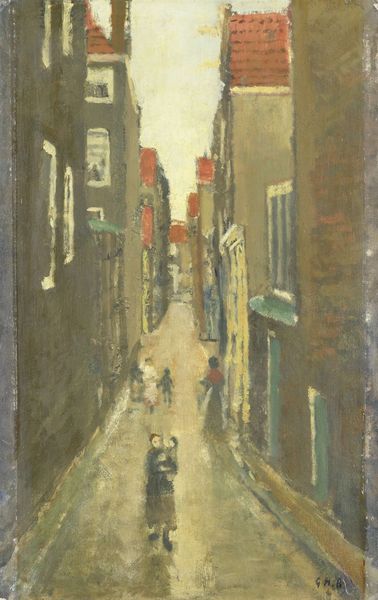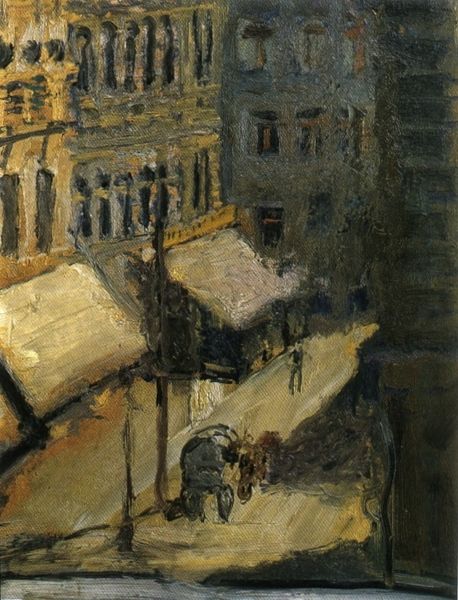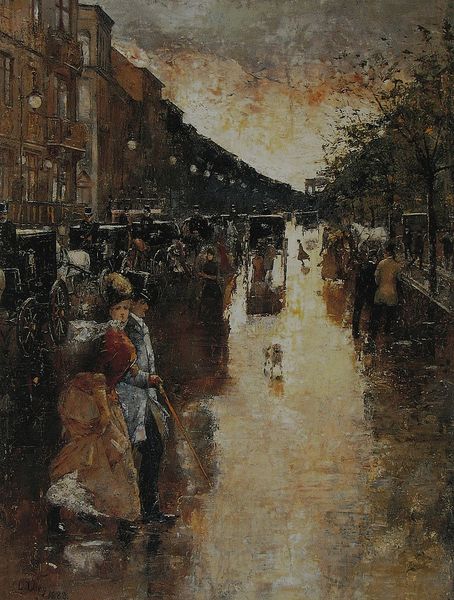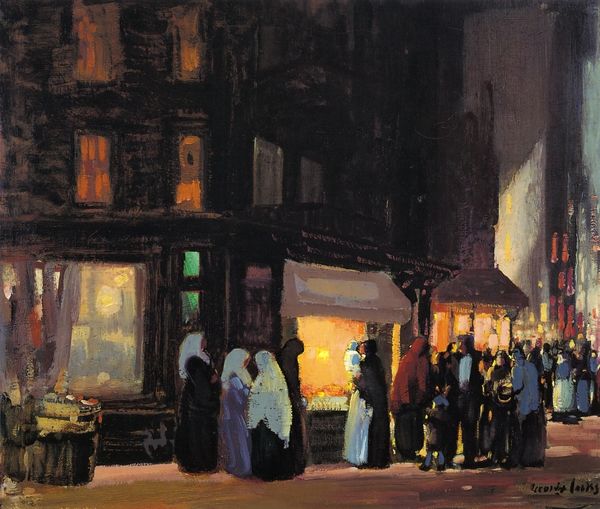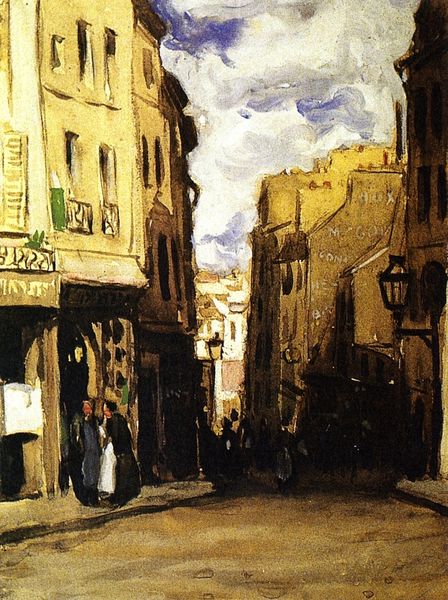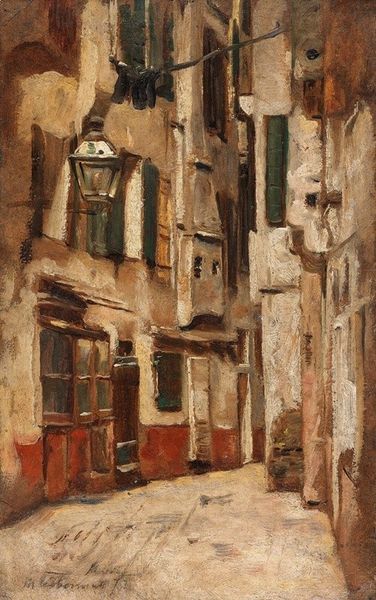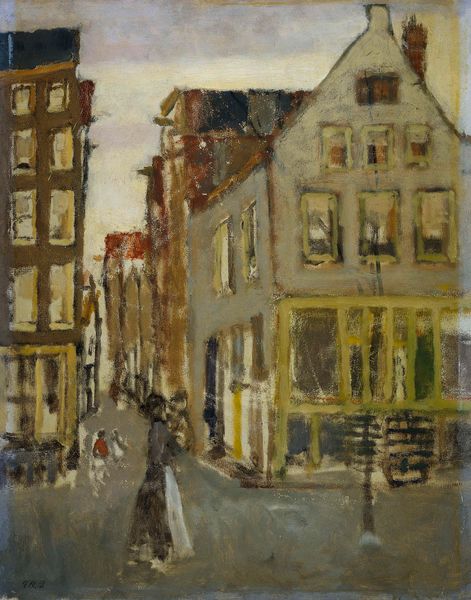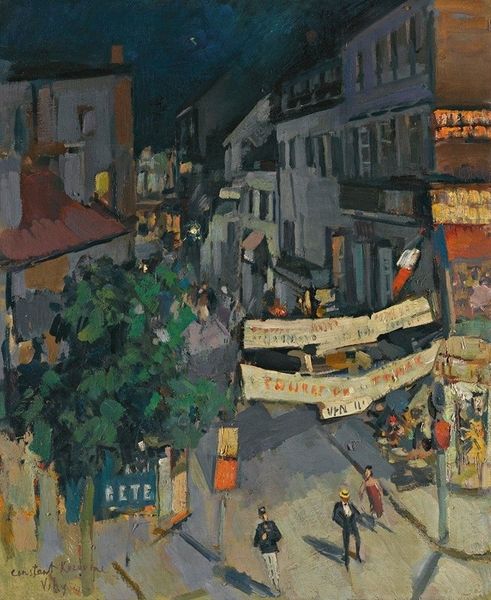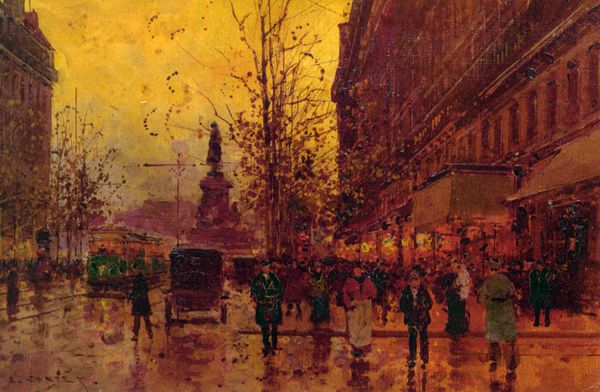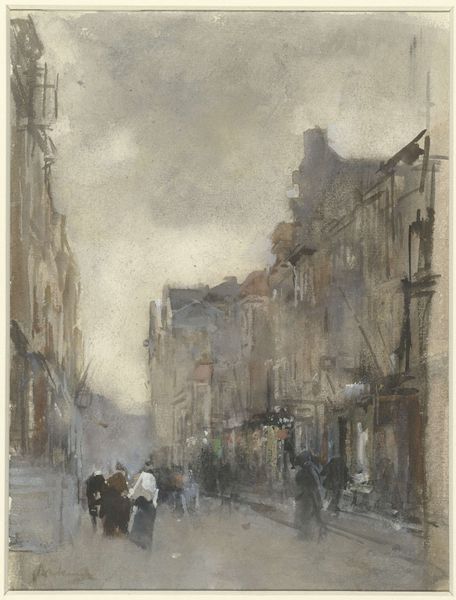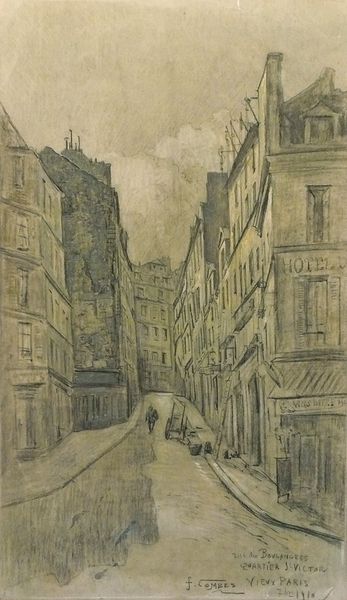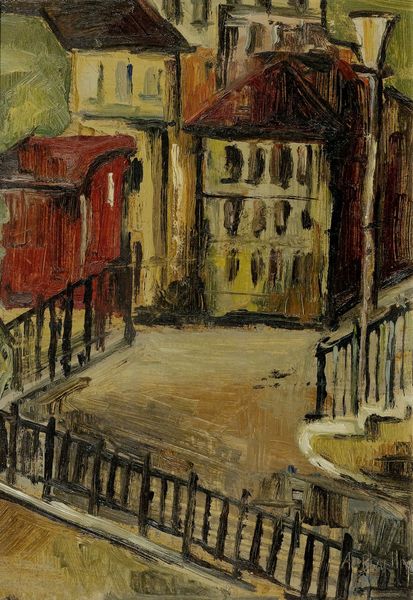
Dimensions: support: 603 x 730 mm frame: 830 x 955 x 108 mm
Copyright: CC-BY-NC-ND 4.0 DEED, Photo: Tate
Curator: Walter Sickert's "Café des Tribunaux, Dieppe" offers a fascinating glimpse into early 20th-century urban life. Editor: The overall effect is one of warmth. The ochre tones create an inviting atmosphere, almost theatrical in its staging. Curator: Sickert, a key figure in British Impressionism, often explored the lives of ordinary people. Considering the historical context, the café was more than just a place to eat; it was a social hub, particularly for the working class. Editor: I see the recurring motif of the streetlamp – a beacon in the gathering dusk. The lamps seem to serve as a metaphor, perhaps for hope or guidance. Curator: The location itself, Dieppe, was a popular destination, signifying a certain level of cultural exchange, a crossing point between different worlds and classes. Editor: It’s a place of encounter, with a feeling of transience. One can almost feel the cool sea breeze on the thoroughfare. Curator: Precisely, and Sickert masterfully captured the vibrancy and shifting identities within that space. Editor: Absolutely. It's a visual record of social interplay and a poignant moment frozen in time.
Comments
tate 8 months ago
⋮
http://www.tate.org.uk/art/artworks/sickert-cafe-des-tribunaux-dieppe-n03182
Join the conversation
Join millions of artists and users on Artera today and experience the ultimate creative platform.
tate 8 months ago
⋮
In the 1890s Sickert spent most of his summers at the French port of Dieppe, and from 1896 to 1905 he lived there permanently. At that time it was popular with British artists as well as being a fashionable holiday resort for English people as indicated by a barber’s sign in English on the right. The Café des Tribunaux was at a focal point of the town, where two roads converge, and was frequented by British visitors. Both French realist and Impressionist tendencies are present in the painting. Gallery label, November 2016
